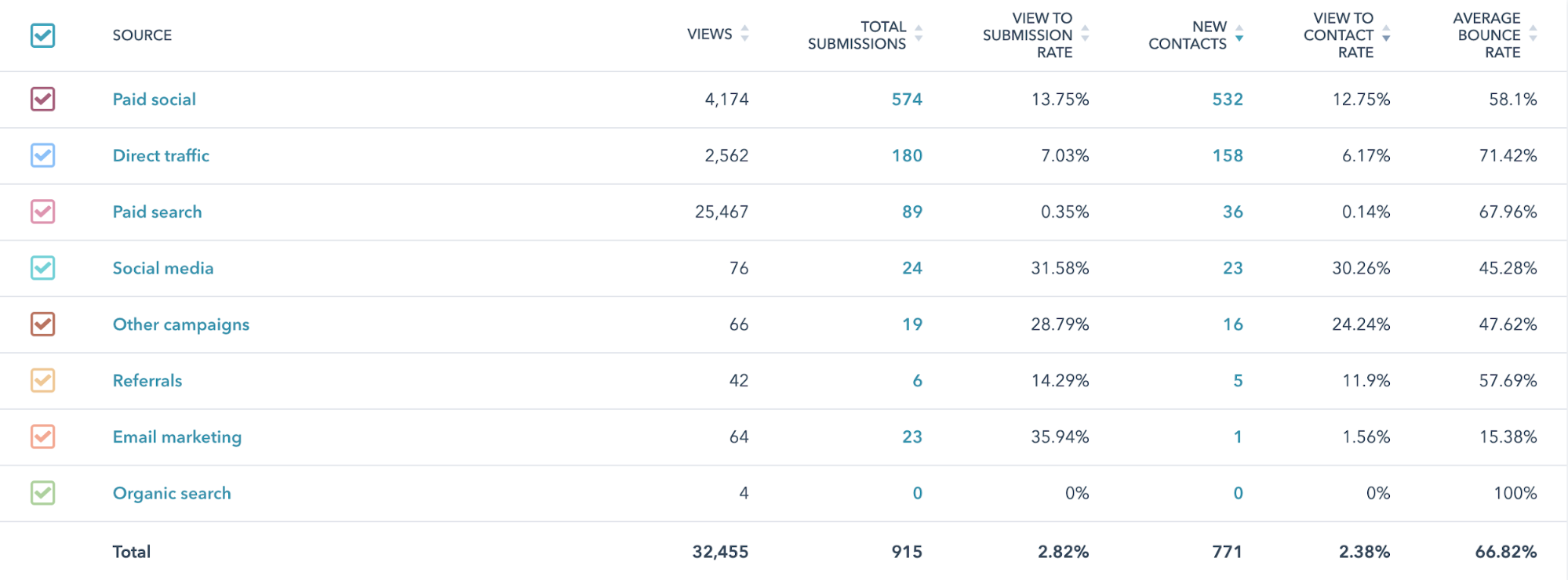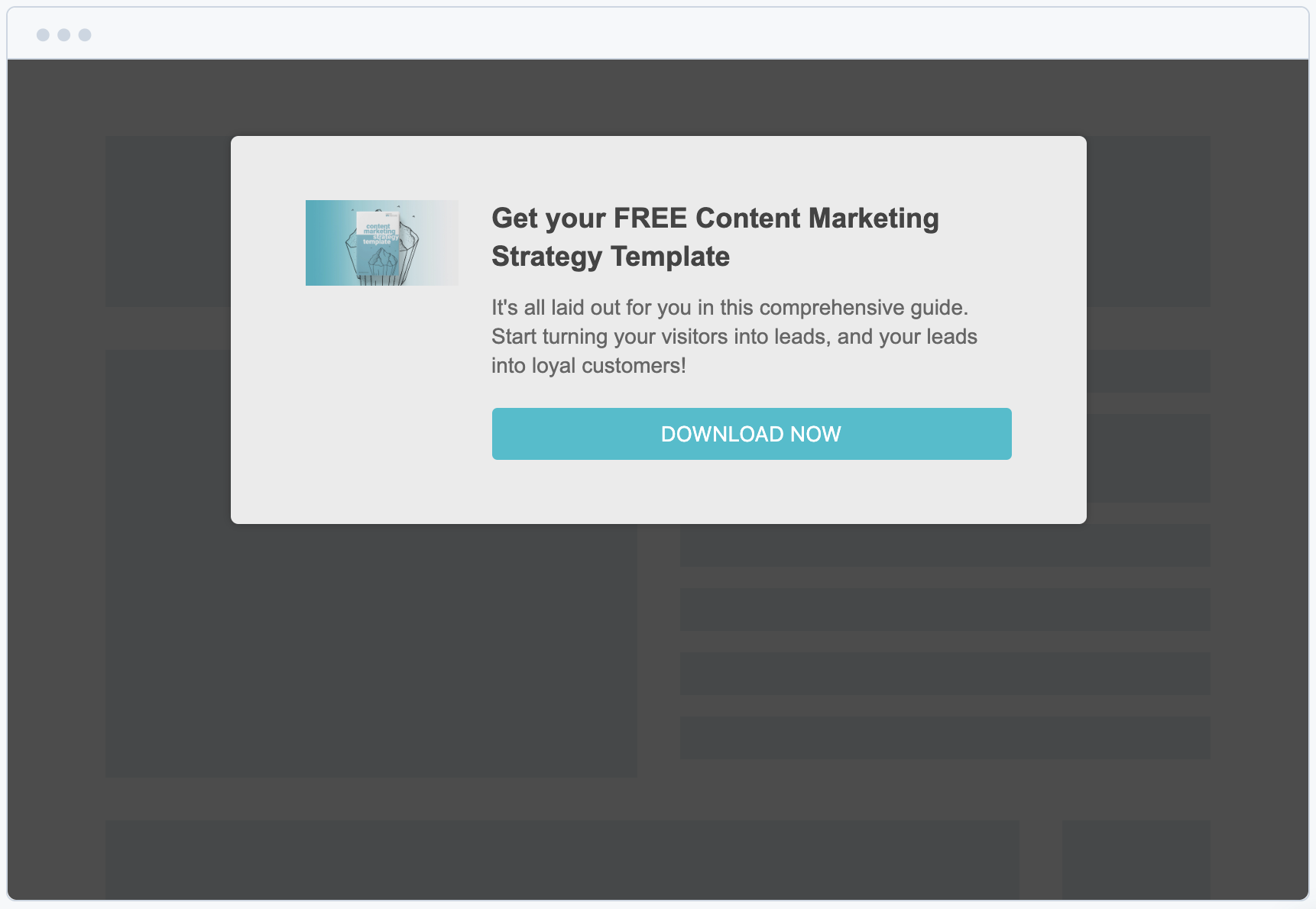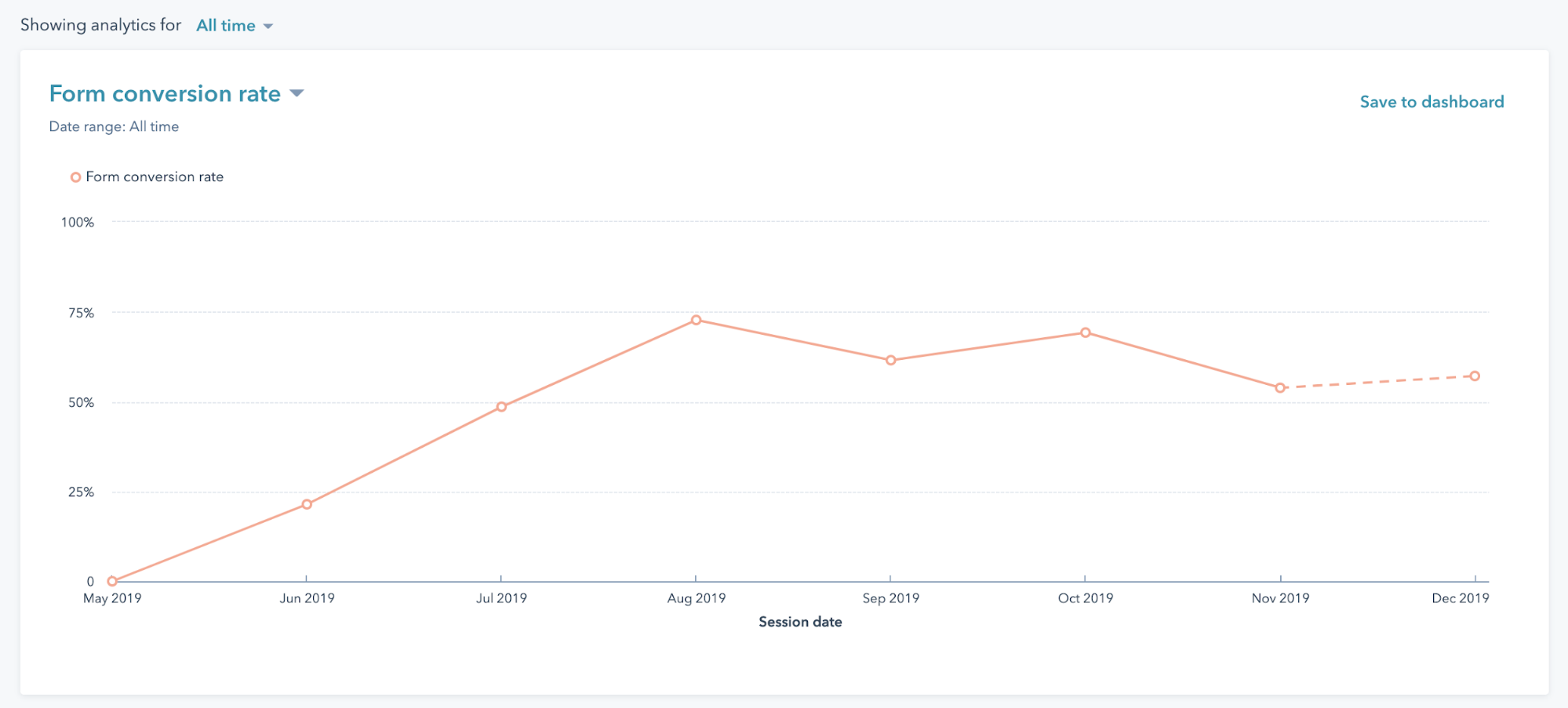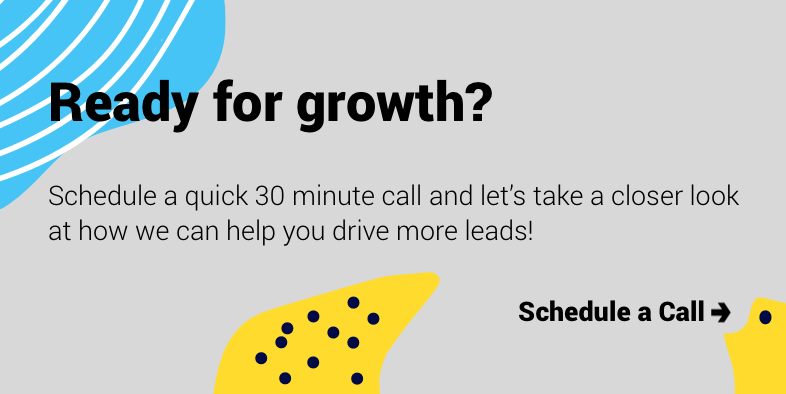In June 2019, we launched our new awareness stage inbound marketing campaign, a series of blogs and free templates around the topic of content marketing.
The main offer was our Content Marketing Strategy Template (CMST), a free downloadable template that our visitors could use to create their own strategy.
READ: 5 Ways to increase conversions with your content
The goal of the campaign was to generate leads at the top of our funnel that we could then start to nurture and ultimately convert into customers.
When we built the campaign we created two conversion points. The first was a landing page with a form that visitors needed to submit in order to receive the CMST. Here are the results:

In total, the landing page generated 771 new contacts a conversion rate of 2.38%.
READ: The complete guide to customer acquisition
Our conversion rate was however skewed by the results from paid search. You can see from the results that 78% of the page views were generated by paid search which only converted at 0.14%.
If we exclude the paid search results we see that the rest of the channels performed significantly better, generating 735 new contacts at a conversion rate of 10.52%.
The second conversion point was an exit-intent pop-up form. Here are the results:

In total, the exit intent pop-up form generated 113 new contacts. That equates to a 12.35% increase in conversion rate for the overall campaign.
According to Sumo, while conversion rates vary wildly, the average pop-up form converts at roughly 3% which was in line with the view-to-submission rate we saw from ours.
While a 3% conversion rate might not seem significant, the effect the pop-up form had on the performance of the overall campaign is.
The pop-up form increased the new contacts generated by the CMST campaign by 12.35%, far exceeding the expected outcome.
Let’s take a closer look at what we did.
1. Give visitors a second chance

One of the main reasons we implemented an exit-intent pop-up form was to provide visitors with a “last chance” to convert.
Visitors would have seen other call-to-actions dotted around our website advertising the CMST campaign but had failed to convert.
By generating a pop-up just before they clicked away from our website we were essentially giving them one last chance, asking “Are you sure?” before they walked out our door.
2. Where is just as important as when

Another key decision we made was about placement. We didn’t want the form to appear on every page of our website because it could be a distraction from the actions those specific pages were trying to generate.
Instead, the form appeared on our home page, blog, and service pages. More importantly, it was excluded from other offer landing pages, our contact us page, and our Schedule A Call pages.
The results from those optimisations are pretty clear. In the image above you can see how the form conversion rate improved as we started excluding more irrelevant pages.
3. What we would do differently
There is always room for improvement and although the pop-up form performed better than we were expecting, there are a couple of things we would like to test with future pop-up forms.
The first would be a more visual design and more action-oriented copy. The reason we didn’t was due to the limitation with the pop-up form designer native to HubSpot. There are however 3rd party integration that can be used to overcome this.
READ: 7 Ways HubSpot CRM can improve your customer acquisition
The second would be a shorter form.
Although the form in the pop-up only contained 4 questions, about half the amount on the landing page, it would be interesting to see if we could increase the pop-up’s conversion rate by reducing the form to 1 field.
The hypothesis is that by reducing the friction even further, we might see even better results.
Key Takeaways
In our latest campaign, we created an exit-intent pop-up form to create an additional opportunity for our website visitors to download our Content Marketing Strategy Template.
The pop-up converted at roughly 3% but improved the number of new contacts generated by the campaign by over 12%.
By improving the placement of the form on our website we were able to further improve the forms conversion rate, reaching a high of nearly 75%.



